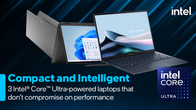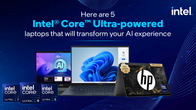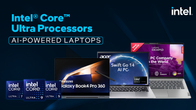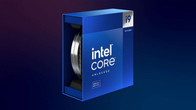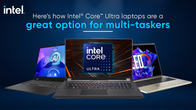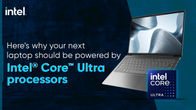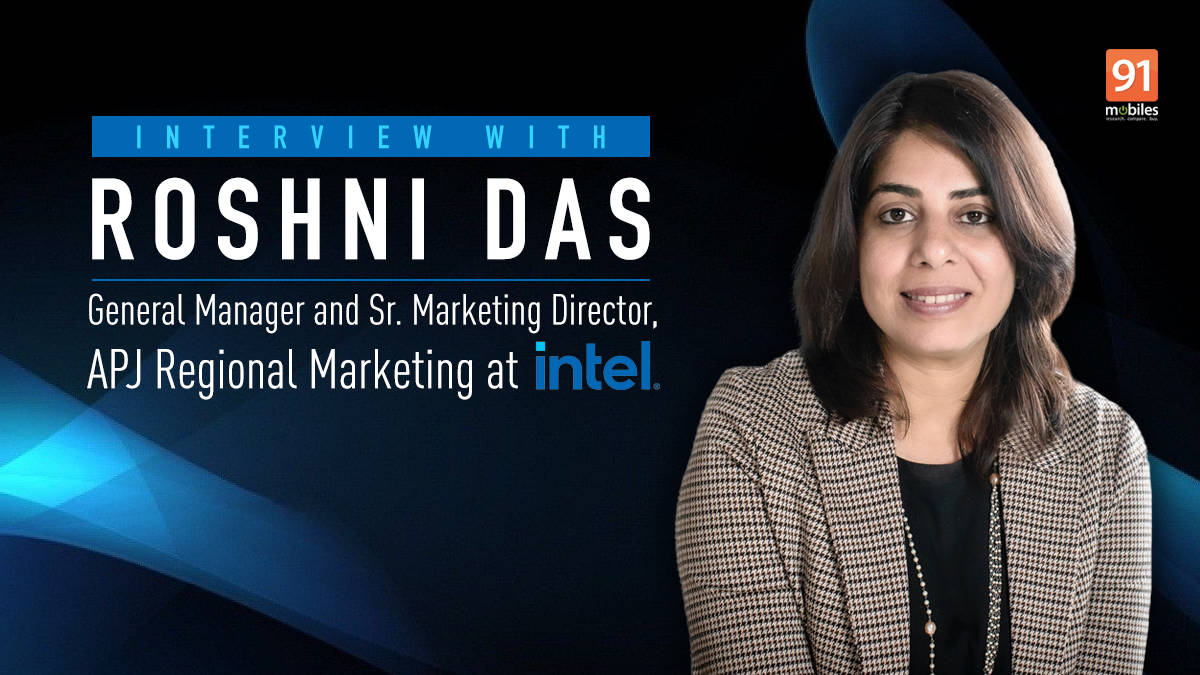
52 years ago, in 1971, Intel launched “the first commercially produced microprocessor” called the 4004. It was a 4-bit CPU and just like gamers today that need the best CPU inside their machines, the 4004 was used in the first microprocessor-controlled pinball game. Fast forward more than two decades and my first experience with an Intel processor was with the PC in the computer lab at my school which ran on an Intel Pentium processor. The need of the hour was to train students on how to use a PC but I found myself spending a lot of time playing the original Prince of Persia (developed by Jordan Mechner) and Dangerous Dave on it.
The year is 2023 and the signature Intel Inside tune still has one of the highest brand recall in marketing history! The reason for this is quite simple – Intel makes some of the best PC processors in the market, combined with some of the best marketing strategies offering the PC community a bang for their buck!
To understand Intel from the inside (pun intended), I had the opportunity to talk to Roshni Das, General Manager and Sr. Marketing Director, APJ Regional Marketing at Intel.
Roshni says, “At Intel, community marketing is a separate focus and we largely leverage social media and on-ground intersects to talk to our different users. Social media plays on the need to literally socialize, with people you have something in common with. Some platforms have understood this brilliantly and tailored their interface to help communities form, nurture, grow and expand. Discord for example has explained this so beautifully in an ad campaign they did in 2021 with Danny DeVito – the need to connect and be in sync with like-minded people.
Reddit, Twitch and Discord – we’ve seen astonishing DAUs and seen them housing online communities – developers, gamers, creators etc.
Community is more important than ever in a rapidly changing world. With so much competition for time and engagement, the rules are constantly evolving. It is becoming more necessary to develop strategies to foster community engagement, including limiting access to increase suspense, appealing to people’s better natures, and developing content truly adapted to new social platforms. This year’s hottest social media app, BeReal,60 relies on a sense of live community to create buzz. The app enables people to connect to the reality of their lives at that precise moment. It’s a very clever idea and one which is being integrated into other apps, including TikTok. As marketers, we need to keep evaluating different mediums and methods with which to reach out to our users and narrate our stories”.
From the above, one thing is clear – Intel is on the cutting edge of marketing activities ensuring it keeps in with changing trends to highlight how its offerings affect the lives of users in an ever-changing environment.
Learnings from the pandemic and the chip shortage
Quite recently the world witnessed a change that it had never seen – a pandemic. Working from home became the new normal, the office was literally 10 steps away from your bed and demand for PCs and laptops shot up like never before. The side effect was that the world also witnessed a chip shortage which was a hindrance to meeting consumer demand.
Roshni says that “what we have observed from a market consumption standpoint is that PC usage data remains strong, reinforcing that use-cases brought on by COVID are persistent even as the economy has re-opened. We remain clear-eyed on managing near-term weakness in PCs, the market is affected by macro uncertainty, rising interest rates and the recent disruptions brought on by geopolitical unrest, compounded by COVID impacts. But we also see the enduring and increasing value PCs have in our daily lives.
In 2023, we will continue to navigate the short-term challenges while striving to meet our long-term commitments, including delivering leadership products anchored on open and secure platforms, powered by at-scale manufacturing.
Every part of our lives is becoming more digital, and compute is scaling across different workloads over and above PC usage hence a big focus is our IDM 2.0 strategy – creating an internal foundry, evolving our systems, business practices and culture to establish Intel’s leadership in the industry”.
A glimpse into the PC enthusiasts market in India
PC builders and enthusiasts have been around since the dawn of the PC but the phenomenon has picked up over the past few years in India. Places like Nehru Place in Delhi are the go-to destination for users looking to build their PC and we have also seen a rise in third-party vendors who are more than happy to build you a custom rig for a fee.
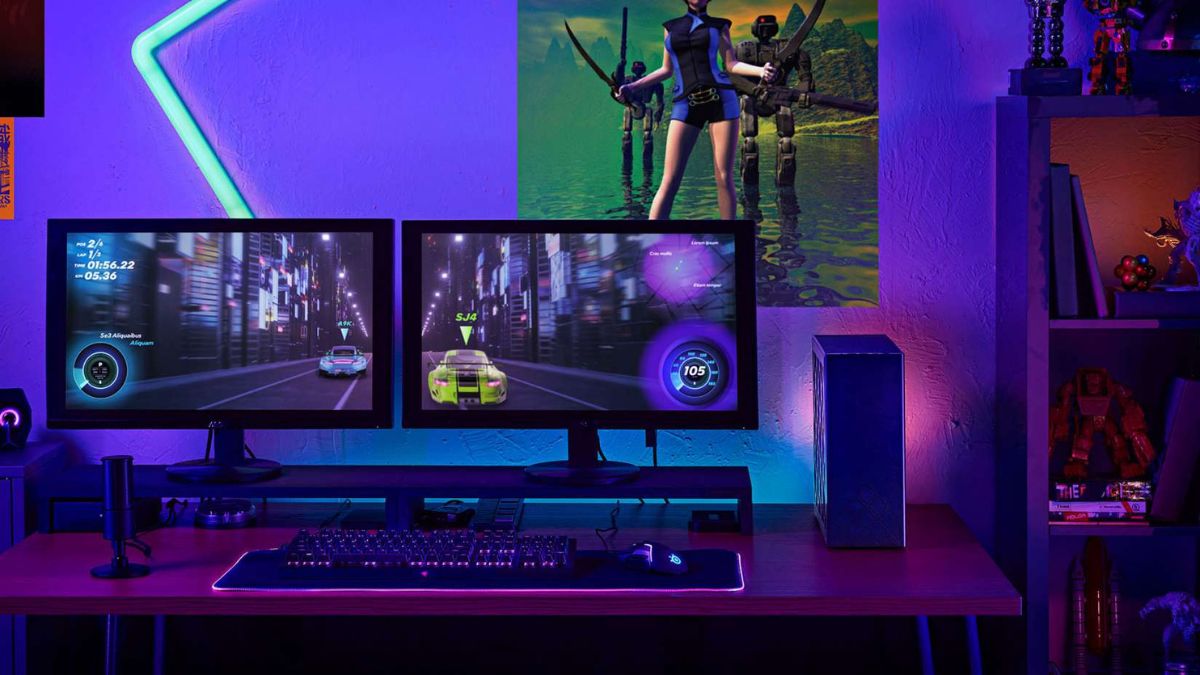
Speaking of the PC and enthusiasts market, Roshni says, “PC Building and enthusiast market has been seeing a boom from pandemic years and this is directly correlating with the boom that we see in overall gaming as an industry. Across the entire gamut of users and specifically gamers, streamers and content creators there is a demand for high-performance compute & the ability to multitask between heavy workloads. This could be anything from designing and rendering content to gaming at high fps and streaming at the same time. This demand is fueling the desktop and DIY segment’s growth. Our leadership performance hybrid architecture is a significant advancement towards helping enthusiasts achieve their goals. More System integrators and component partners are now coming together to create such exciting PC builds and our 13th gen Raptorlake launch event last year in Delhi was a testament of the same with more than 20+ custom mods showcasing the superior performance of our leadership CPU – Intel Core i9 13900k. Recently, the overclocking team at Asus managed to set a new world record for CPU frequency by overclocking our Intel Core i9-13900K to 9.0 GHz. Intel has been extensively facilitating PC build workshops, Liquid Nitrogen overclocking sessions across colleges and consumer gaming conventions – to drive more awareness around PC builds and desktop performance. We are also very excited about our recent launch in the 13th gen family – the Intel® Core™ i9 – 13900KS, delivering up to 6Ghz max frequency out of the box. The gaming CPU mix is seen increasing at a steady pace within the overall portfolio and we expect this to just grow many folds in the next 4-5 years”.
Intel 13th Gen Processors: A Deep Dive
Taking a step back let’s break down Intel’s offerings in the Indian market today. Intel’s latest CPU generation is the 13th Gen Intel CPU available in Core i3, i5, i7, and i9 and we also have the HX, H, P and U accompanying each core series. If you are new to the world of PC processors or just trying to wrap your head around Intel’s offerings, the gamut of processors can get quite complicated.
Roshni breaks down the 13th gen Intel chips for me making it easy to understand. Before getting into the details of the various offerings she says, “let me talk about what features on the 13th Gen Intel Core Processors are industry disrupting and deliver an unparalleled computing experience.
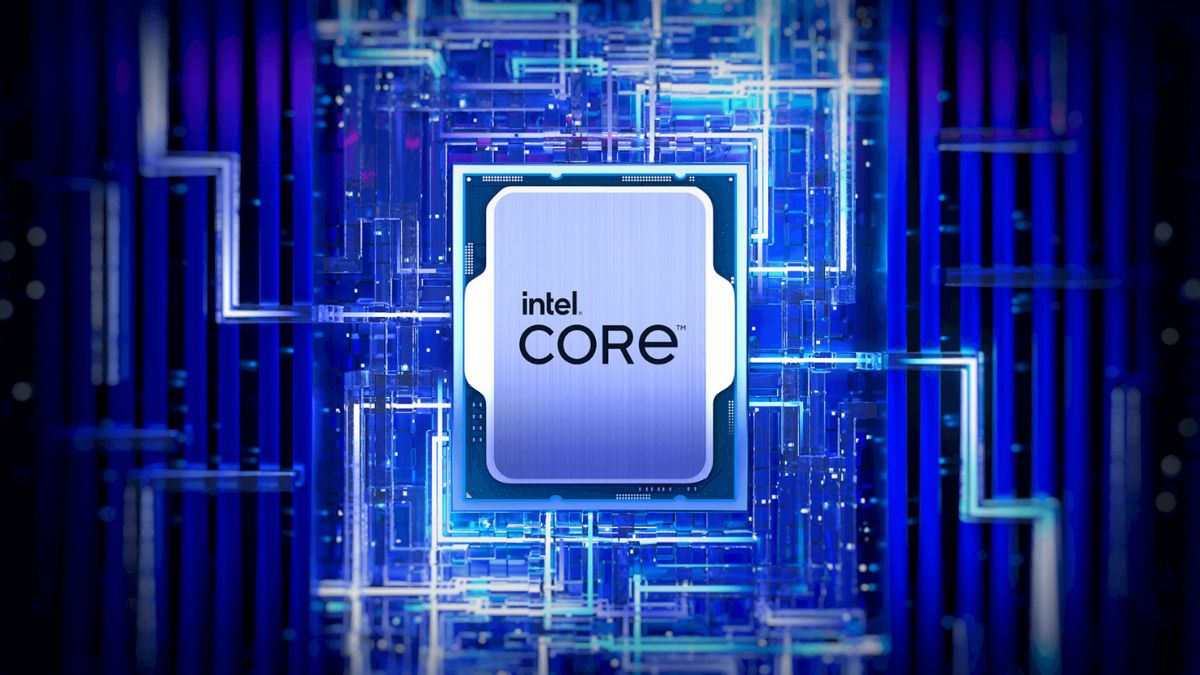
Performance Hybrid Architecture – Our performance hybrid architecture is its most significant shift in x86 architecture in more than a decade, re-envisioned to provide the performance to match the way real people use their PCs today.
Unmatched performance – 13th Gen Intel Core processors are designed to provide an uncompromising experience for users – both in application performance and platform compatibility.
Intel Thread Director – This technology is currently designed into modern 12th Gen and 13th Gen Intel Core processors that help the operating system make more intelligent and informed decisions about where to place running threads. It uses real-world hardware telemetry to guide operating systems to the right workload, which can be guided to the right cores at the right time. It does this dynamically rather than simply using a static rule.
13th Gen Intel Core Desktop processors continue to use the LGA 1700 socket and are backwards compatibles with the 600 series chipset-based motherboards and conversely 12th Gen Intel Core processors are forward compatible with our latest 700 series chipset-based motherboards. In addition to the latest DDR5 memory support, 13th Gen also supports DDR4 memory up to 3200 MT/s. This gives our customers the flexibility to design their PC builds optimizing for the best performance or for budget accordingly.
Our processors can be divided into both laptop or “mobile” and desktop processors, and we have a different suite of products for different workloads and requirements.
Mobile processors are:
H and HX Series: These are high-performance systems – best suited for gaming, video and photo editing or any workload that requires high-performance compute. In addition, the HX series with ECC memory support can be designed into professional mobile workstation platforms.
P & U series: They are both meant for thin & light notebooks targeting mainstream workloads – content creation, casual gaming, productivity etc. The P series is optimized more towards performance – has a higher core and thread count. The U series is optimized more towards battery life, it has a lower core and thread count than the P series.
Desktop:
K and KF series: These are the most powerful desktop processors – unlocked for overclocking – aimed at gamers, professional content creators and anyone else whose use case requires peak compute performance.
Non-K desktop processors come with and without (F series) integrated graphics – these are aimed at mainstream desktop towers, All-in-One PC, and mini-PC form factors.
A new introduction is the N series – which includes both – mobile and desktop processors
These are aimed at entry-level, low-power users only – perfect for browsing, learning etc. An ideal fit for students.
Intel Core i3, Intel Core i5, Intel Core i7, and Intel Core i9 indicate computing capability – the higher the number, the more cores, and therefore more computing power. For example, a U series Intel Core i7 processor will have more computing power compared to a U series Intel Core i3 processor.
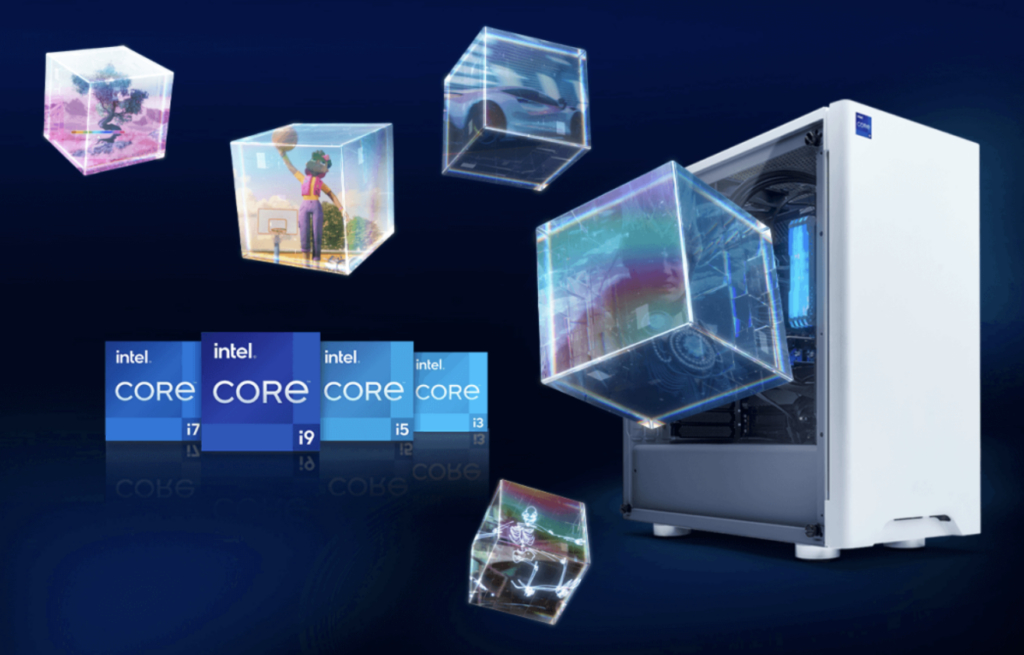
What are P-cores and E-cores?
While CPUs with multiple cores have been a staple for some time now for sustained and improved performance, Intel made a groundbreaking change with the 12th gen processors with the introduction of Efficiency Cores and Performance Cores in the CPU structure.Roshni tells me, “We introduced Performance Hybrid Architecture with our Intel Core 12th Gen processors. Hybrid computing means bringing together two types of CPU cores in one package: P cores i.e big, performance cores for handling heavy tasks, and E cores which are small, efficient cores for everything else – background tasks, lighter workloads. 13th Gen Intel Core desktop processors adapt to the ways you work and play. Thanks to Intel Thread Director, the OS scheduler is able to put the right workload on the right core, so as to ensure you don’t face any performance hiccups. Built directly into the hardware, the Thread Director uses real-time telemetry from within the CPU to inform the OS scheduler. This helps ensure that Performance-cores and Efficient-cores work in concert; background tasks don’t slow you down, and you can have more apps open simultaneously.
For example, when gaming, Intel Thread Director will put your game on the P-cores, and in the event, a background task pops up, like a virus scan or an update, that task would be relegated to the E-cores. Content creators will be able to start a render in one program and go edit a 3D asset in another program without facing any performance issues because Thread Director ensures the two tasks are assigned to the two different core types, ensuring fast and smooth operation. This means that users are now able to do more, at the same time”.
The new ARC
While Intel has made leaps and bounds in CPU innovation, the brand has recently launched its own dedicated GPUs in the form of Intel ARC to rival AMD and NVIDIA. Shedding light on the new ARC GPU Roshni says, “The vision behind Intel Arc, Intel’s latest entry into the Discrete GPU business – is to democratize high-performance graphics processing for all. Intel Arc is built on a highly scalable Xe architecture.
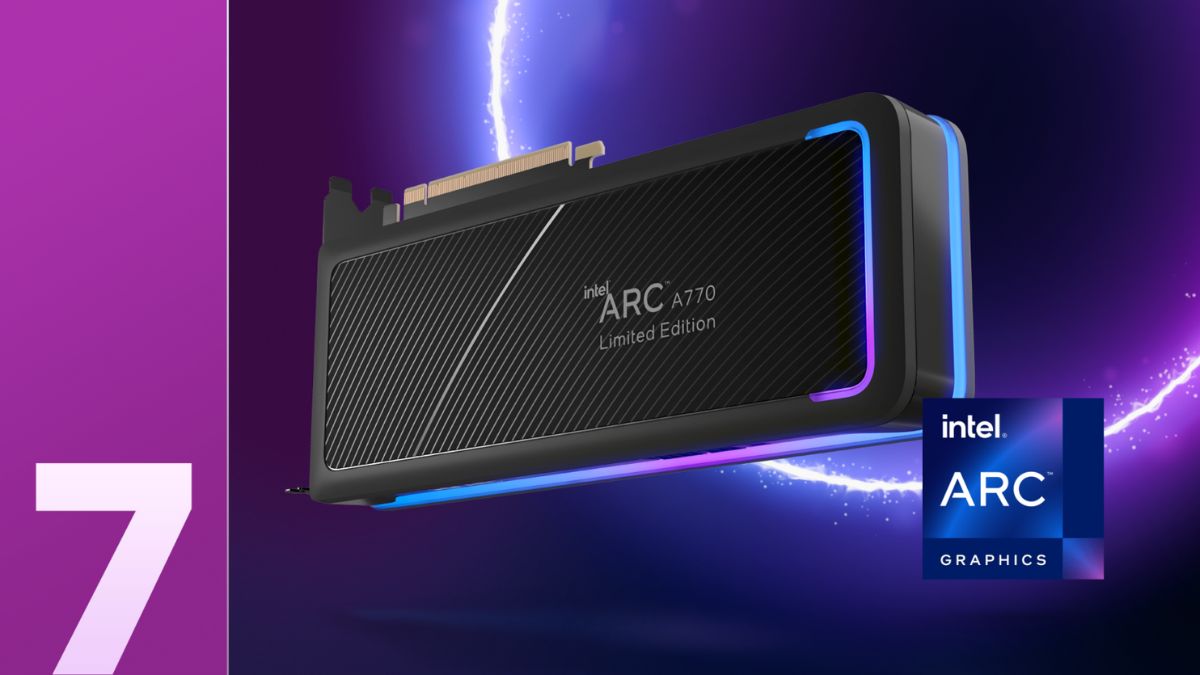
At its heart is the Xe Core, a compute-focused, programmable and scalable element, which is made up of a combination of Vector engines, Matrix engines (referred to as XMX – Xe Matrix eXtensions), cache, and shared local memory. Intel Arc GPUs offer the latest features such as support for Ray Tracing and XeSS, AV1 encode and decode, all at a highly competitive price point.
Making things all the more interesting are the recent driver updates and pricing advantages extended to our flagship Intel Arc A750 Limited Edition Cards – these are our Intel Branded cards – one of the leading cards in the segment offering over 52% better Performance/$ across a host of popular game titles like CS:GO, League of Legends, Lost Ark more. Intel already has graphics cards out also from partners like Asrock, Gigabyte, Acer and on the Laptop side – HP, MSI, Samsung – we are just getting started and are excited about what lies ahead in our graphics journey.”
The changing landscape of e-sports
Intel has been at the forefront of competitive gaming since its inception. From the good old days of BYOC (Bring Your Own Computer) till today when e-sports is a global phenomenon, Intel has tournaments such as Intel Extrem Masters and many more spearheading the e-sports movement.
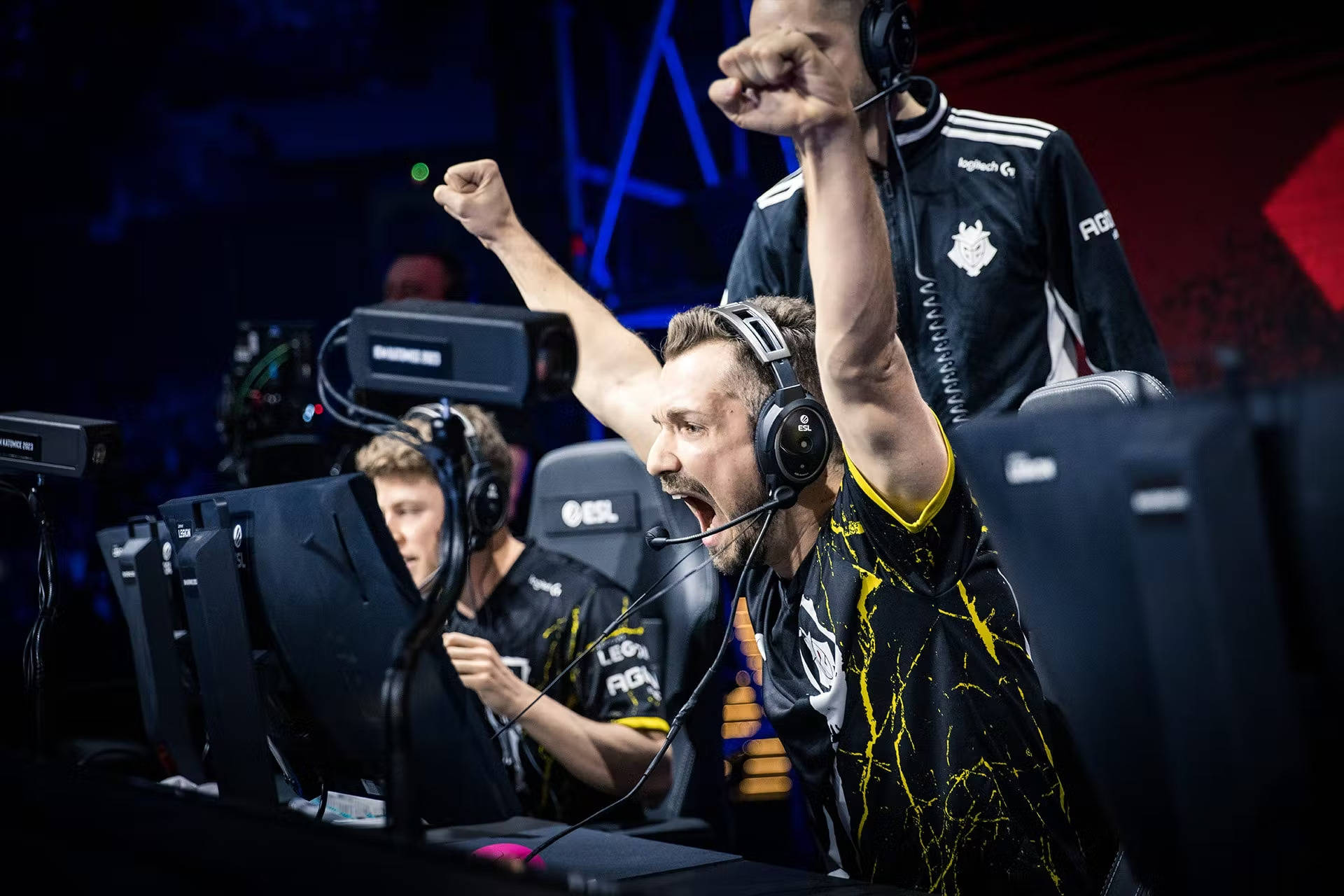
Speaking about e-sports Roshni says, “Competitive esports is something Intel has been extremely familiar with – we just concluded IEM Kato and have a strong roadmap of gaming events around the world. The E-Sports industry overall is on an upward trajectory – fueled by multiple govt backed initiatives, a rising creator community and awareness around pro-esports career options! Game commentators, developers, esports team players and community organizers are hot topics of interest to youngsters looking to start off their gaming career. The esports industry has been on a rapid growth trajectory in India even through the pandemic. More and more brands are coming onboard as event sponsors. This is due to the massive reach and visibility that competitive gaming drives as a marketing platform. With people being forced to stay at home during the Pandemic, gaming became a great way for them to socialise, contributing to a 44% increase in average game time. Post-pandemic the biggest shift seen by E-Sports is the re-entry of LAN gaming! Nothing beats the excitement of watching your favourite streamers and teams play and compete on-ground across popular titles like CS:GO, Valorant, New State etc. This also creates opportunities for us to create more watch parties, and meet and greet events across geos – help bring the community together. Intel has been pivotal in creating and powering such community activations at scale – e.g. our Intel Gamer Days event last year in Bangalore where 3k+ fans turned up to experience a showcase Valorant streamer event with top 20 gaming Influencers of India, or taking up sponsorships of the ComiCon Gaming Arena, India’s largest consumer gaming showcase with footfalls of over 20,000+.
We are also working closely to activate more such gaming events in 2023 – allowing gamers to get a 1st hand experience of our flagship 13th Gen Intel® Core™ processors and superior products across the CPU & GPU portfolio”.
Innovation in computing vs marketing
With so many innovations on the product front, I also asked Roshi how the innovation in computing has affected marketing. She said, “There are 3 major eras that have driven compute. First, we had the PC era where the Internet helped to connect a billion devices and there was a huge amount of data generated and a subsequent need for compute. The second big leap was the mobile era. Mobility, connectivity, device explosion, access, and cloud allowed for more connections and innovations. Now, we are heading towards the era of distributed intelligence with 5G connecting devices and technologies like AI driving stronger intelligence and experiences at the edge. As marketers – this is relevant as it has enabled a boundary-less world and enables us to tell stories across geographies. Eg: Global brands don’t have to always localize – we can drive a balance of local and global content. The beauty of digital mediums is that the right conversations, no matter in which geo, can have a huge impact on your brand and relevance to its customers. However, basics stay – being authentic, telling compelling stories, keeping people at the heart of storytelling”.Being with a brand that has not only fueled but also pioneered innovations in PC gaming, I asked Roshni if she is a gamer mom. She says, “Well, my son Arjun is an ardent gamer and while I am not a gamer mom, given Intel’s huge focus on gaming, I am able to keep up with my son’s gaming lingo, his passion, and get some insights into the community. We connect on the titles he’s playing, and the players he follows, and through our conversations, I can understand why he enjoys the precision and teamwork that gaming entails. I think I could qualify as a cool mom”

